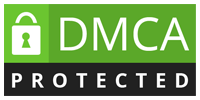The retail industry is one of the most targeted sectors for cybercriminals due to the vast amounts of financial and customer data it processes. In recent years, the dark web has emerged as a critical threat to retailers, providing a marketplace for malicious actors to trade stolen data, hacking tools, and other illicit goods and services. This case study will explore the dark web, its risks for retailers, and measures businesses can take to protect themselves.
Want to discuss your situation? No obligation! [email protected]
I help retail businesses in the greater DC area who are challenged with unreliable business systems to improve their reliability and security to ensure their businesses survive!
Understanding the Dark Web
The dark web refers to a portion of the internet that is intentionally hidden from traditional search engines and requires specific software, such as the Tor browser, to access. It comprises a network of websites and forums that are encrypted and anonymized, ensuring user privacy and making it difficult for law enforcement to trace activities.
While the dark web does serve legitimate purposes, such as protecting privacy and promoting free speech, it also hosts a substantial amount of criminal activity. Cybercriminals use the dark web to sell and purchase hacking tools, stolen data, and other illicit goods and services.
Risks for Retailers
- Stolen Customer Data
One of the primary risks for retailers is the sale and distribution of stolen customer data, including names, addresses, email accounts, and payment information. Cybercriminals often target retailers due to the high volume of data they possess, and the dark web provides a platform for the sale and purchase of this stolen data. Once acquired, criminals can use this data to commit financial fraud, such as unauthorized transactions and identity theft.
2. Intellectual Property Theft
The theft of intellectual property, such as trade secrets, proprietary designs, or product formulas, poses a significant risk to retailers. Cybercriminals can sell this information on the dark web, allowing competitors to gain an unfair advantage and erode the retailer’s market share. Intellectual property theft can also result in lost revenue, legal issues, and damage to a retailer’s competitive edge.
3. Counterfeit Goods
The dark web serves as a marketplace for counterfeit goods, which can result in lost sales, brand reputation damage, and legal issues for the affected retailer. Criminals use the dark web to distribute these counterfeit goods at a fraction of the cost of the original items, making it difficult for legitimate retailers to compete.
4. Cyberattack Planning
The dark web provides a platform for cybercriminals to collaborate and plan cyberattacks against retailers. This can include the sharing of hacking tools, vulnerabilities in a retailer’s systems, or strategies for compromising a specific target. These coordinated attacks can have severe consequences for retailers, including data breaches, financial losses, and operational disruptions.
5. Brand Reputation Threats
The sale of stolen data, counterfeit goods, and other illicit activities on the dark web can result in significant damage to a retailer’s brand reputation. Customers may lose trust in the retailer’s ability to protect their data and provide authentic products, resulting in lost sales and a tarnished brand image.
Mitigating the Risks
To counter the risks associated with the dark web, retailers should implement the following strategies:
- Strengthen Cybersecurity Measures
Retailers should adopt a multi-layered approach to cybersecurity, including the use of firewalls, intrusion detection systems, and robust encryption for sensitive data. Implementing regular security audits and penetration testing can also help identify and address vulnerabilities.
2. Employee Training and Awareness
Educating employees about the risks of the dark web and the importance of protecting sensitive information is essential. Retailers should provide regular training on cybersecurity best practices and establish clear policies for handling customer data.
3. Retailers can work with cybersecurity experts to monitor the dark web for mentions of their company, stolen data, or counterfeit goods. Early detection can help mitigate the impact of a breach or counterfeit product distribution.
4. Collaborate with Law Enforcement and Industry Peers
Sharing information and collaborating with law enforcement and industry peers can help retailers stay informed about emerging threats and trends. Participating in industry-specific cybersecurity forums and working groups can also facilitate the exchange of threat intelligence and best practices.
5. Implement Strong Access Controls
To minimize the risk of insider threats, retailers should implement strict access controls and limit access to sensitive information on a need-to-know basis. Regularly reviewing and updating access privileges can help ensure that only authorized personnel have access to critical data.
6. Develop a Comprehensive Incident Response Plan
In the event of a cyberattack or data breach, having a well-defined incident response plan in place is crucial. Retailers should establish clear protocols for detecting, containing, and remediating threats, as well as communicating with customers, partners, and regulators in the aftermath of an incident.
7. Engage in Proactive Threat Hunting
Retailers can employ threat hunting techniques to actively search for signs of compromise or suspicious activity within their networks. By proactively identifying potential threats, retailers can take action to mitigate risks before they escalate into full-blown incidents.
8. Invest in Cyber Insurance
Given the financial and reputational costs associated with cyberattacks and data breaches, retailers should consider investing in cyber insurance. Cyber insurance policies can help cover the costs of incident response, legal fees, and potential regulatory fines, providing an additional layer of financial protection for the business.
The dark web presents a significant risk to the retail industry, offering cybercriminals a platform to trade stolen data, hacking tools, counterfeit goods, and other illicit goods and services. By adding intellectual property theft, cyberattack planning, and brand reputation threats to the list of risks, retailers must adopt a comprehensive approach to cybersecurity. This includes robust technical measures, employee education, and proactive threat monitoring. By investing in cybersecurity and collaborating with industry peers and law enforcement, retailers can better protect themselves and their customers from the dangers of the dark web.
Want to discuss your situation? No obligation! [email protected]
I help retail businesses in the greater DC area who are challenged with unreliable business systems to improve their reliability and security to ensure their businesses survive!





